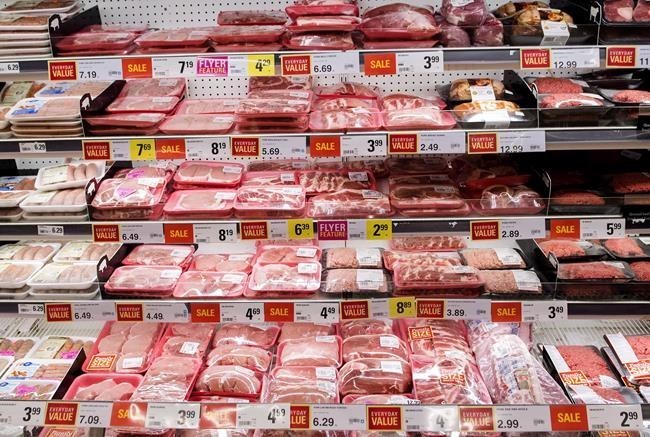Some Burnaby residents are looking for answers after suffering from “sticker shock” over recent prices increases in basic food items.
“This is outrageous,” said one Burnaby NOW reader named Gladys. “I get that things aren’t going to be the way they used to be, but it’s rough making ends meet while having to sacrifice having enough food around because the prices have gone up so much.”
According to Statistics Canada, the price of round steak increased from $17.97 per kg in March of this year to $19.05 per kg in July. Prime rib roast jumped from $36.66 per kg to $41.39.
The price of flour, cereal, and some produce items has also crept up since spring, and more increases are expected this fall.
“I’m trying to feed a family of five and it’s ridiculous what I’m seeing on store shelves,” writes NOW reader Samantha. “And it doesn’t seem to matter which store I go to.”
A number of factors are behind the recent sticker shock, including global population growth driving long-term demand for food, as well as a weaker Canadian dollar and the return of restaurant dining as COVID-19 public health restrictions are lifted.
This year, however, grocery prices are also being affected by the extreme heat and drought plaguing Canadian farmers and ranchers.
Sylvain Charlebois, director of the Agri-Food Analytics Lab at Dalhousie University, said he anticipates a yearly overall food price increase of five per cent on average — meaning Canadian families could spend close to $700 more on groceries in 2021 than they did the year before.
"It’s likely the highest jump in food prices in recent history, in dollars (unadjusted for inflation)," Charlebois said. "And I think the worst is yet to come."
Growing conditions have been so poor in Western Canada that Statistics Canada now projects this fall's wheat harvest will be 35 per cent below last year's levels.
Canadian canola production is expected to fall 24.3 per cent this year to its lowest level in a decade, at 14.7 million tonnes. Barley production is expected to decrease 27 per cent year-over-year and oat production is expected to fall 32.9 per cent, according to Statistics Canada.
“This is the high cost of climate change,” said another NOW reader, named James. “Companies and politicians complain that it’s too expensive to make substantial changes to fight climate change, but think of all the costs from weather events and now rising food costs. It’s too expensive to not change before it’s too late.”
The spike in the cost of feed grains is one reason consumers are seeing higher beef prices, said Brian Perillat, manager and senior analyst with Canfax, the market analysis arm of industry group the Canadian Cattlemen’s Association.
“In the last year or two we’ve seen barley prices double. They’ve gone up from $4 a bushel to over $9," Perillat said. "That's a major input to beef production."
Perillat added when it comes to meat prices, the full impact of this year's drought hasn't been realized yet. There are estimates that up to 20 per cent of the Canadian cattle herd could be liquidated as ranchers who can't afford to feed their animals are forced to cull their herds.
“We anticipate (cattle) supplies are going to go down over the next couple years," Perillat said. "And that means prices are going to go up."
- With additional reporting by the Canadian Press

